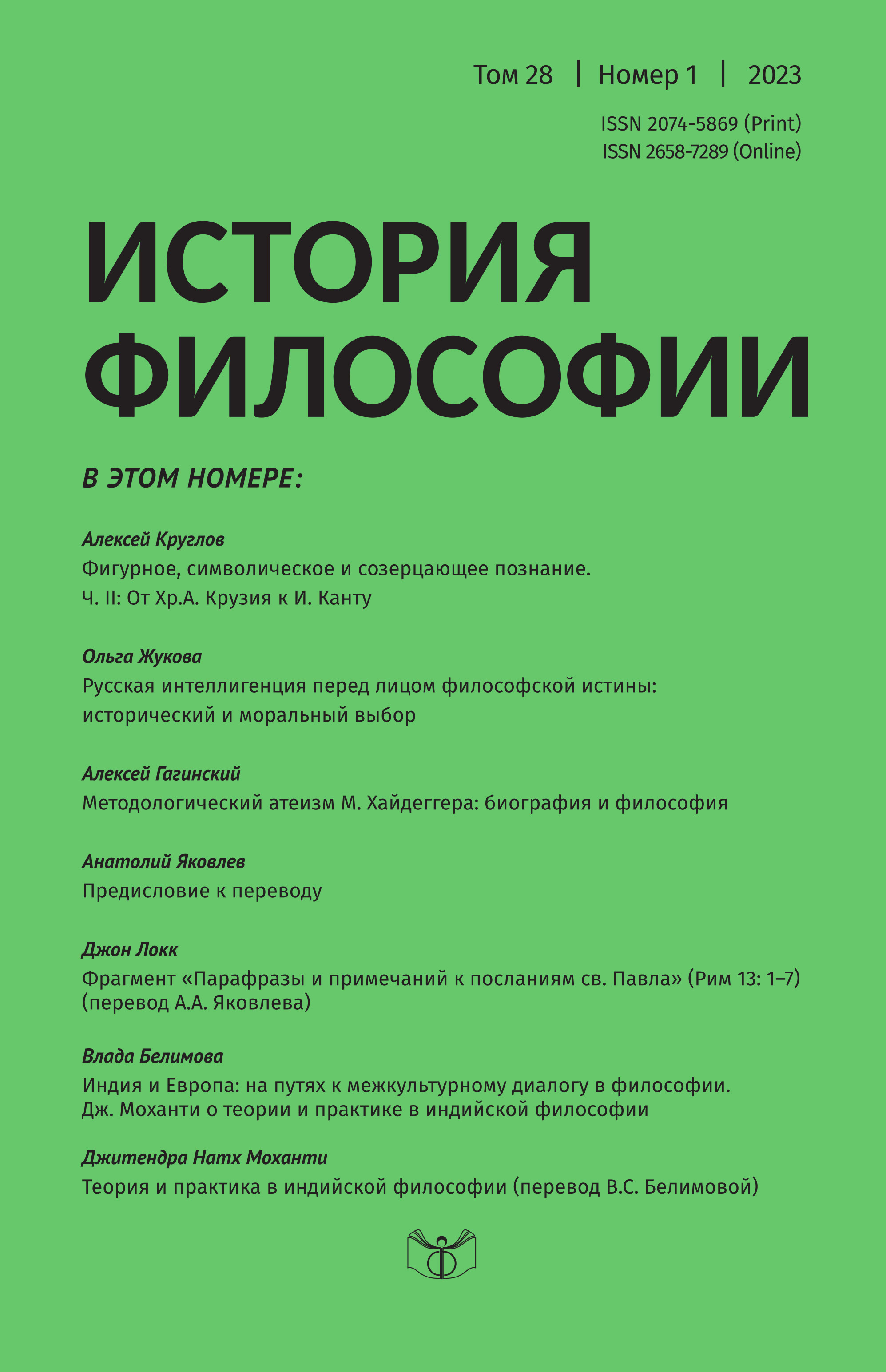Figurative, Symbolic and Contemplative Cognition. Part II: From Chr.A. Crusius to I. Kant
Keywords:
symbolic cognition, intuitive cognition, figurative synthesis, speciosa, imagination, image, scheme, G.W. Leibniz, Chr. Wolff, Chr.A. Crusius, I. KantAbstract
This paper is the second part of the investigation. Chr. A. Crusius in the “Way to the Certainty and Adequacy of Human Knowledge” introduced the most developed alternative view to Wolffian position regarding symbolic and contemplating correlation. He preferred the contemplating cognition and tied its functioning with imagination. Kant in the “Critique of Pure Reason” brings about a terminology revolution and changes the style of the problem consideration. He turns the proceeding from F. Viet and G.W. Leibniz’s art “speciosa generalis”, which was earlier thought as symbolic, into a priori figurative synthesis. Following the changes in the nature of sensibility and understanding treatment, Kant rejects the opposition of intuitive or contemplative and symbolic in favour of the following oppositions: intuitive is opposed to discursive, while the contemplation is opposed to the understanding concept. The figurative synthesis as a result of transcendental faculty of imagination instead of the former empirical imagery creates the schematic possibility of the empirical image per se. This well-developed Kant’s position unwittingly put aside Wolff’s program of reduction of the symbolic cognition to quasi-intuitive one. However, today this program can have a practical importance and enrich the problem of the cognition visibility.

